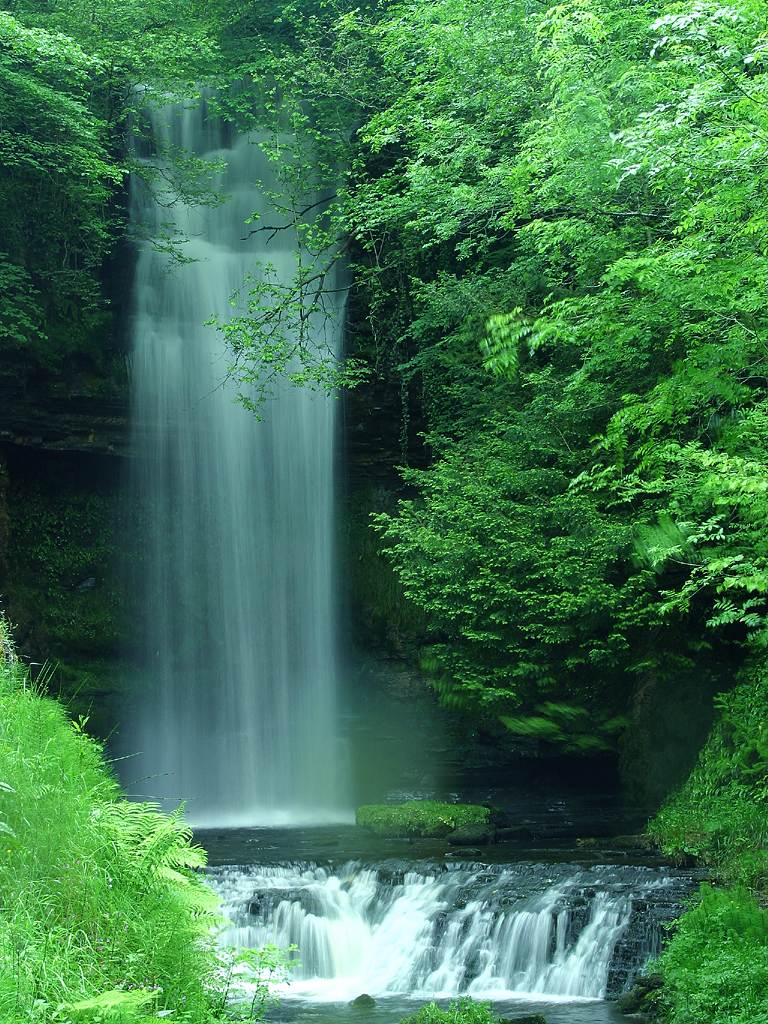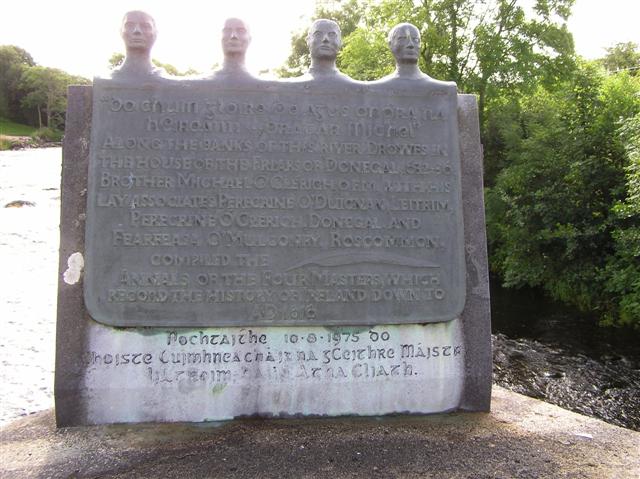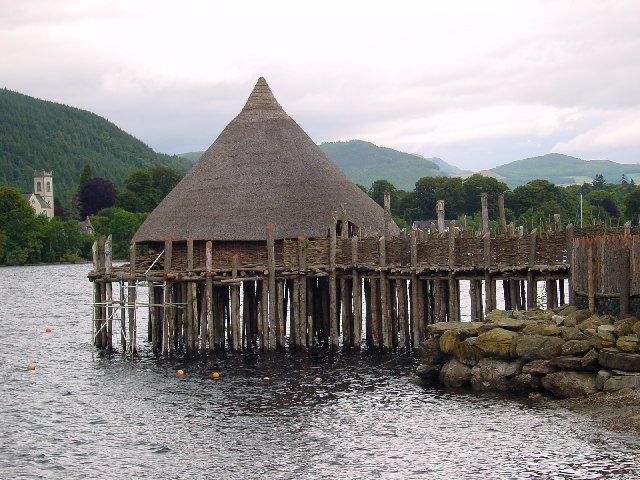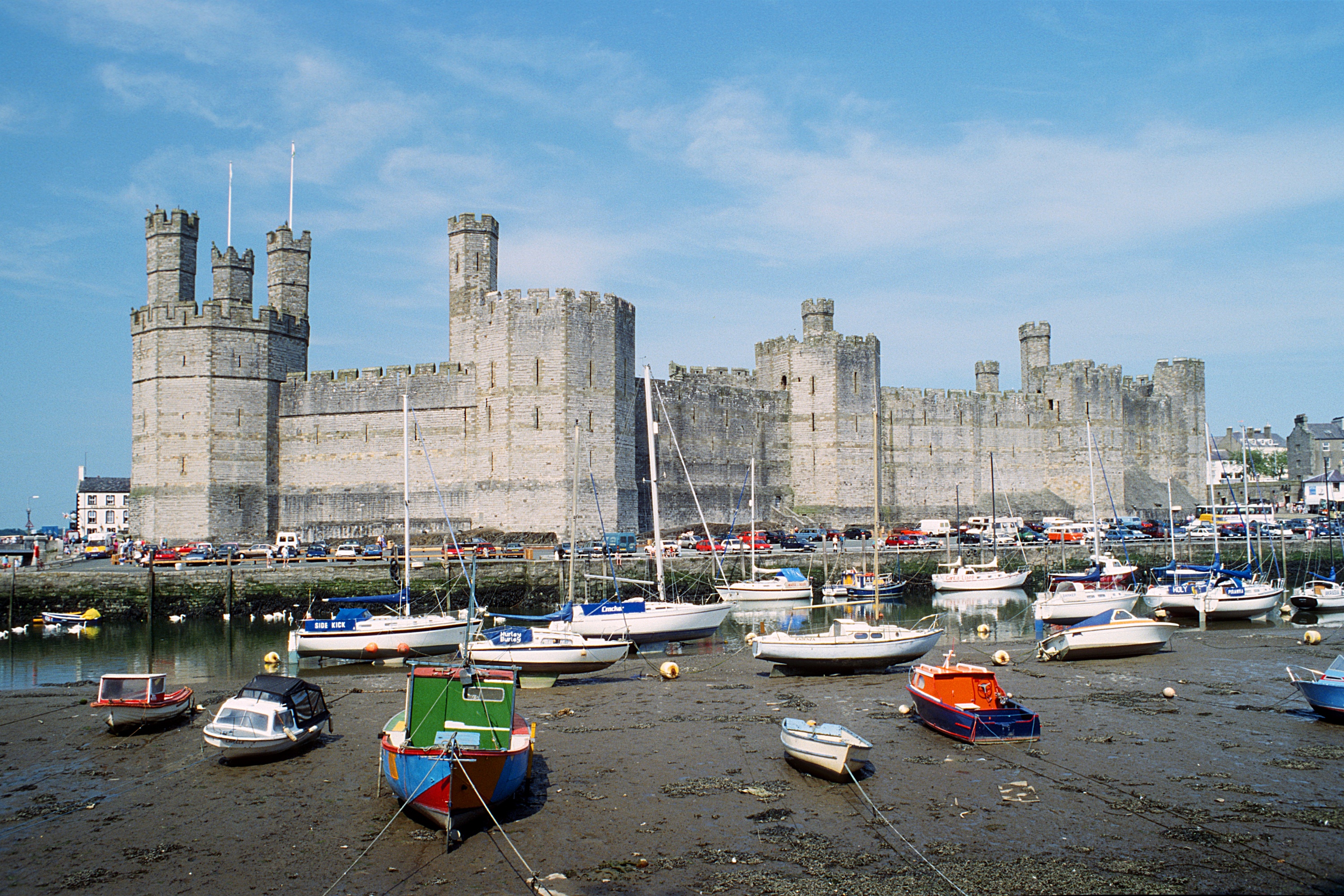|
St. John's Lough
St. John's Lough (), also known as St. John's Lake, is an irregularly shaped freshwater lake located in south County Leitrim, in northwest of Ireland. The lake forms part of the wider Shannon–Erne Waterway tourist attraction. The ecology of John's Lough, and the Shannon-system, is threatened by pollution and invasive species such as curly waterweed, zebra mussel, and freshwater clam. Etymology Named after ga, Eóin Baiste, meaning "John the Baptist", the lake is therefore named "the lake of John". Geography St. John's Lough is a shallow freshwater lake west of Ballinamore, covering a surface area somewhere between and . Saint John's Lough extends from in the north-east, before dividing into three broad reaches separated by narrow passes, or straits. The "" connects the Ballinamore canal and northern lake portion to the central John's lough, and the "" connects the central lough to the southern lough. The catchment area comprises Forestry (2%), pasture (55%), and other ag ... [...More Info...] [...Related Items...] OR: [Wikipedia] [Google] [Baidu] |
County Leitrim
County Leitrim ( ; gle, Contae Liatroma) is a county in Ireland. It is in the province of Connacht and is part of the Northern and Western Region. It is named after the village of Leitrim. Leitrim County Council is the local authority for the county, which had a population of 35,087 according to the 2022 census. The county encompasses the historic Gaelic territory of West Breffny () corresponding to the northern part of the county, and Muintir Eolais or Conmaicne Réin, corresponding to the southern part. Geography Leitrim is the 26th largest of the 32 counties by area (the 21st largest of the 26 counties of the Republic) and the smallest by population. It is the smallest of Connacht's five counties in both size and population. Leitrim is bordered by the counties of Donegal to the north, Fermanagh to the north-east, Cavan to the east, Longford to the south, Roscommon to the south-west and Sligo to the west. Fermanagh is in Northern Ireland while all the other ... [...More Info...] [...Related Items...] OR: [Wikipedia] [Google] [Baidu] |
Trophic State Index
The Trophic State Index (TSI) is a classification system designed to rate water bodies based on the amount of biological productivity they sustain. Although the term "trophic index" is commonly applied to lakes, any surface water body may be indexed. The TSI of a water body is rated on a scale from zero to one hundred. Under the TSI scale, water bodies may be defined as: * oligotrophic (TSI 0–40, having the least amount of biological productivity, "good" water quality); * mesotrophic (TSI 40–60, having a moderate level of biological productivity, "fair" water quality); or * eutrophic to hypereutrophic (TSI 60–100, having the highest amount of biological productivity, "poor" water quality). The quantities of nitrogen, phosphorus, and other biologically useful nutrients are the primary determinants of a water body's TSI. Nutrients such as nitrogen and phosphorus tend to be limiting resources in standing water bodies, so increased concentrations tend to result in increased ... [...More Info...] [...Related Items...] OR: [Wikipedia] [Google] [Baidu] |
Human Settlement
In geography, statistics and archaeology, a settlement, locality or populated place is a community in which people live. The complexity of a settlement can range from a minuscule number of dwellings grouped together to the largest of cities with surrounding urbanized areas. Settlements may include hamlets, villages, towns and cities. A settlement may have known historical properties such as the date or era in which it was first settled, or first settled by particular people. In the field of geospatial predictive modeling, settlements are "a city, town, village or other agglomeration of buildings where people live and work". A settlement conventionally includes its constructed facilities such as roads, enclosures, field systems, boundary banks and ditches, ponds, parks and woods, wind and water mills, manor houses, moats and churches. History The earliest geographical evidence of a human settlement was Jebel Irhoud, where early modern human remains of eigh ... [...More Info...] [...Related Items...] OR: [Wikipedia] [Google] [Baidu] |
Annals Of The Four Masters
The ''Annals of the Kingdom of Ireland'' ( ga, Annála Ríoghachta Éireann) or the ''Annals of the Four Masters'' (''Annála na gCeithre Máistrí'') are chronicles of medieval In the history of Europe, the Middle Ages or medieval period lasted approximately from the late 5th to the late 15th centuries, similar to the post-classical period of global history. It began with the fall of the Western Roman Empire a ... Irish history. The entries span from the Flood myth, Deluge, dated as 2,242 Anno Mundi, years after creation to AD 1616. Publication delay Due to the criticisms by 17th century Irish historian Tuileagna Ó Maol Chonaire, the text was not published in the lifetimes of any of the participants. Text The annals are mainly a compilation of earlier annals, although there is some original work. They were compiled between 1632 and 1636, allegedly in a cottage beside the ruins of Donegal Abbey, just outside Donegal (town), Donegal Town. At this time, howeve ... [...More Info...] [...Related Items...] OR: [Wikipedia] [Google] [Baidu] |
Crannog
A crannog (; ga, crannóg ; gd, crannag ) is typically a partially or entirely artificial island, usually built in lakes and estuarine waters of Scotland, Wales, and Ireland. Unlike the prehistoric pile dwellings around the Alps, which were built on the shores and not inundated until later, crannogs were built in the water, thus forming artificial islands. Crannogs were used as dwellings over five millennia, from the European Neolithic Period to as late as the 17th/early 18th century. In Scotland there is no convincing evidence in the archaeological record of Early and Middle Bronze Age or Norse Period use. The radiocarbon dating obtained from key sites such as Oakbank and Redcastle indicates at a 95.4 per cent confidence level that they date to the Late Bronze Age to Early Iron Age. The date ranges fall ''after'' around 800 BC and so could be considered Late Bronze Age by only the narrowest of margins. Crannogs have been variously interpreted as free-standing wooden stru ... [...More Info...] [...Related Items...] OR: [Wikipedia] [Google] [Baidu] |
Edward III
Edward III (13 November 1312 – 21 June 1377), also known as Edward of Windsor before his accession, was King of England and Lord of Ireland from January 1327 until his death in 1377. He is noted for his military success and for restoring royal authority after the disastrous and unorthodox reign of his father, Edward II. EdwardIII transformed the Kingdom of England into one of the most formidable military powers in Europe. His fifty-year reign was one of the longest in English history, and saw vital developments in legislation and government, in particular the evolution of the English Parliament, as well as the ravages of the Black Death. He outlived his eldest son, Edward the Black Prince, and the throne passed to his grandson, Richard II. Edward was crowned at age fourteen after his father was deposed by his mother, Isabella of France, and her lover Roger Mortimer. At age seventeen he led a successful coup d'état against Mortimer, the ''de facto'' ruler of the ... [...More Info...] [...Related Items...] OR: [Wikipedia] [Google] [Baidu] |
Edward II
Edward II (25 April 1284 – 21 September 1327), also called Edward of Caernarfon, was King of England and Lord of Ireland from 1307 until he was deposed in January 1327. The fourth son of Edward I, Edward became the heir apparent to the throne following the death of his elder brother Alphonso. Beginning in 1300, Edward accompanied his father on invasions of Scotland. In 1306, he was knighted in a grand ceremony at Westminster Abbey. Following his father's death, Edward succeeded to the throne in 1307. He married Isabella, the daughter of the powerful King Philip IV of France, in 1308, as part of a long-running effort to resolve tensions between the English and French crowns. Edward had a close and controversial relationship with Piers Gaveston, who had joined his household in 1300. The precise nature of their relationship is uncertain; they may have been friends, lovers, or sworn brothers. Edward's relationship with Gaveston inspired Christopher Marlowe's ... [...More Info...] [...Related Items...] OR: [Wikipedia] [Google] [Baidu] |
Edward I
Edward I (17/18 June 1239 – 7 July 1307), also known as Edward Longshanks and the Hammer of the Scots, was King of England and Lord of Ireland from 1272 to 1307. Concurrently, he ruled the duchies of Aquitaine and Gascony as a vassal of the French king. Before his accession to the throne, he was commonly referred to as the Lord Edward. The eldest son of Henry III, Edward was involved from an early age in the political intrigues of his father's reign, which included a rebellion by the English barons. In 1259, he briefly sided with a baronial reform movement, supporting the Provisions of Oxford. After reconciliation with his father, however, he remained loyal throughout the subsequent armed conflict, known as the Second Barons' War. After the Battle of Lewes, Edward was held hostage by the rebellious barons, but escaped after a few months and defeated the baronial leader Simon de Montfort at the Battle of Evesham in 1265. Within two years the rebellion was e ... [...More Info...] [...Related Items...] OR: [Wikipedia] [Google] [Baidu] |
National Museum Of Ireland – Archaeology
The National Museum of Ireland – Archaeology ( ga, Ard-Mhúsaem na hÉireann – Seandálaíocht, often known as the "NMI") is a branch of the National Museum of Ireland located on Kildare Street in Dublin, Ireland, that specialises in Irish and other antiquities dating from the Stone Age to the Late Middle Ages. The museum was established under the Science and Art Museum Act of 1877. Before, its collections had been divided between the Royal Dublin Society and the Natural History Museum on Merrion Street. The museum was built by the father and son architects Thomas Newenham Deane and Thomas Manly Deane. The NMI's collection contains artifacts from prehistoric Ireland including bog bodies, Iron and Bronze Age objects such as axe-heads, swords and shields in bronze, silver and gold, with the earliest dated to c. 7000 BC. It holds the world's most substantial collection post-Roman era Irish medieval art (known as Insular art). In addition, it houses a substantial collection of m ... [...More Info...] [...Related Items...] OR: [Wikipedia] [Google] [Baidu] |
Royal Irish Academy
The Royal Irish Academy (RIA; ga, Acadamh Ríoga na hÉireann), based in Dublin, is an academic body that promotes study in the sciences, humanities and social sciences. It is Ireland's premier learned society and one its leading cultural institutions. The Academy was established in 1785 and granted a royal charter in 1786. the RIA has around 600 members, regular members being Irish residents elected in recognition of their academic achievements, and Honorary Members similarly qualified but based abroad; a small number of members are elected in recognition of non-academic contributions to society. Until the late 19th century the Royal Irish Academy was the owner of the main national collection of Irish antiquities. It presented its collection of archaeological artefacts and similar items, which included such famous pieces as the Tara Brooch, the Cross of Cong and the Ardagh Chalice to what is now the National Museum of Ireland, but retains its very significant collection ... [...More Info...] [...Related Items...] OR: [Wikipedia] [Google] [Baidu] |
Middle Ages
In the history of Europe, the Middle Ages or medieval period lasted approximately from the late 5th to the late 15th centuries, similar to the post-classical period of global history. It began with the fall of the Western Roman Empire and transitioned into the Renaissance and the Age of Discovery. The Middle Ages is the middle period of the three traditional divisions of Western history: classical antiquity, the medieval period, and the modern period. The medieval period is itself subdivided into the Early Early may refer to: History * The beginning or oldest part of a defined historical period, as opposed to middle or late periods, e.g.: ** Early Christianity ** Early modern Europe Places in the United States * Early, Iowa * Early, Texas * Early ..., High Middle Ages, High, and Late Middle Ages. Population decline, counterurbanisation, the collapse of centralized authority, invasions, and mass migrations of tribes, which had begun in late antiquity, continued i ... [...More Info...] [...Related Items...] OR: [Wikipedia] [Google] [Baidu] |
13th Century
The 13th century was the century which lasted from January 1, 1201 ( MCCI) through December 31, 1300 ( MCCC) in accordance with the Julian calendar. The Mongol Empire was founded by Genghis Khan, which stretched from Eastern Asia to Eastern Europe. The conquests of Hulagu Khan and other Mongol invasions changed the course of the Muslim world, most notably the Siege of Baghdad (1258), the destruction of the House of Wisdom and the weakening of the Mamluks and Rums which, according to historians, caused the decline of the Islamic Golden Age. Other Muslim powers such as the Mali Empire and Delhi Sultanate conquered large parts of West Africa and the Indian subcontinent, while Buddhism witnessed a decline through the conquest led by Bakhtiyar Khilji. The Southern Song dynasty would begin the century as a prosperous kingdom but would eventually be invaded and annexed into the Yuan dynasty of the Mongols. The Kamakura Shogunate of Japan would be invaded by the Mongols. Goryeo resi ... [...More Info...] [...Related Items...] OR: [Wikipedia] [Google] [Baidu] |









.jpg)


